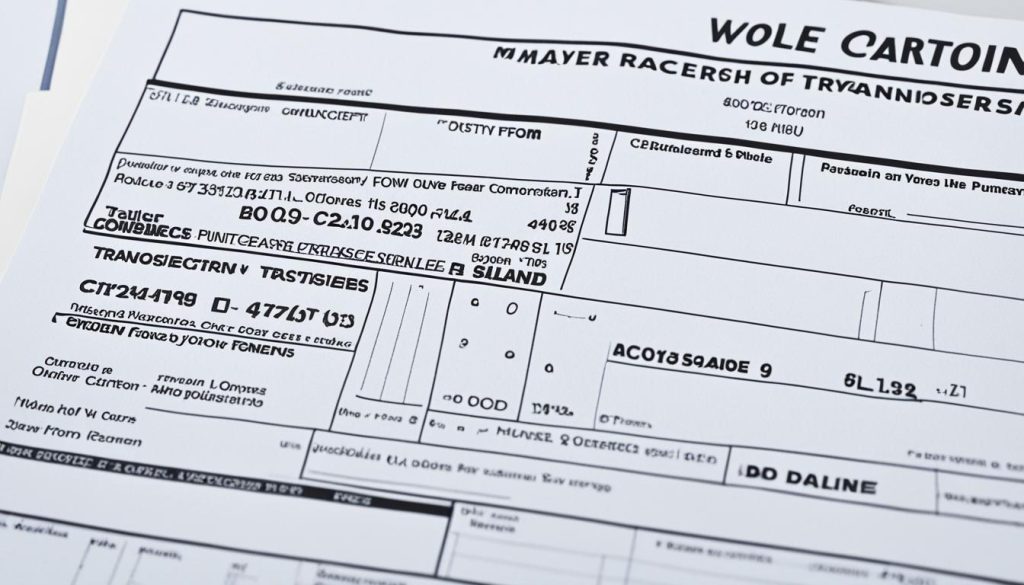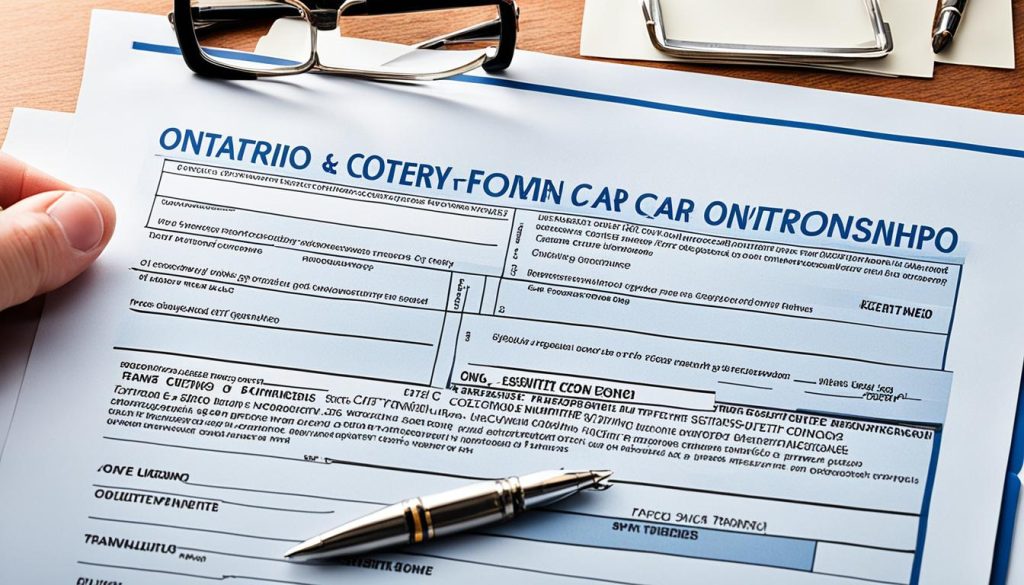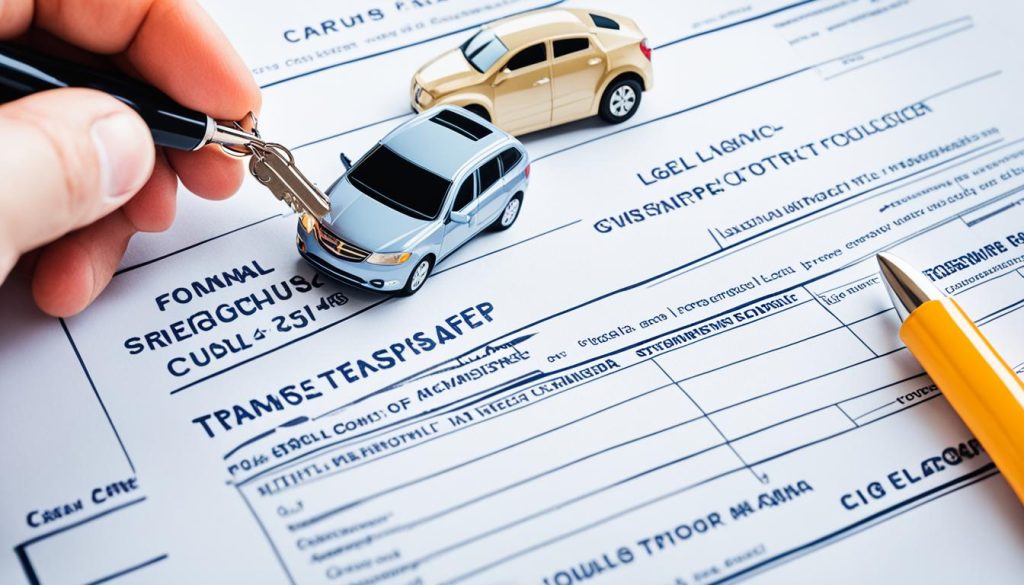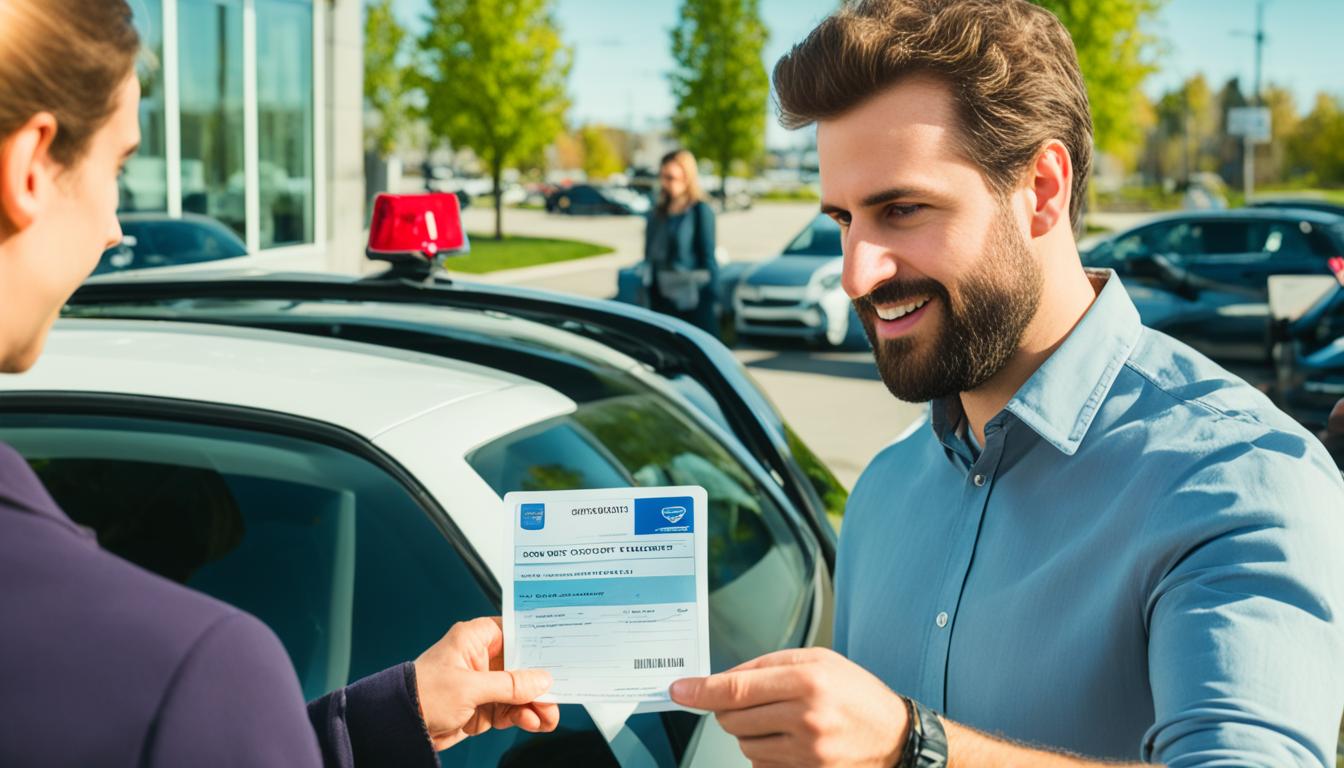When it comes to buying or selling a vehicle in Ontario, one crucial step is transferring ownership from the seller to the buyer. It may seem like a daunting process, but with the right information and proper documentation, transferring vehicle ownership can actually be a straightforward and hassle-free experience. In this article, we will guide you through the steps involved in transferring vehicle ownership in Ontario, ensuring that you are well informed and prepared for the process. Whether you’re a buyer or a seller, understanding the vehicle ownership transfer process is essential to ensure a smooth and legal transaction. So, let’s dive into the details of how to transfer vehicle ownership in Ontario.
Understanding the Vehicle Ownership in Ontario

Vehicle ownership in Ontario is not just about having a car; it’s about holding a legal document that certifies who owns the vehicle. Known commonly as a vehicle permit, this document is essential for the vehicle’s operation within the province. Whether you’re planning to change vehicle ownership Ontario or simply need to understand what it entails, this section offers a comprehensive overview.
What Is Vehicle Ownership?
In Ontario, vehicle ownership represents the legal registration of a car or any other type of vehicle under an individual’s or a company’s name. It’s documented through a vehicle permit, which includes vital information like the Vehicle Identification Number (VIN), make, model, and owner’s details. This permit is crucial, as it’s required in situations ranging from traffic stops to insurance claims.
The Importance of the Vehicle Ownership Document
The vehicle ownership document stands as irrefutable proof of ownership and registration with the Ontario government. It is indispensable during law enforcement checks and vital for validating the legitimacy of a vehicle’s ownership during the sale or transfer process. Holding a current and accurate vehicle ownership document ensures that all legal prerequisites are met for operating or selling a vehicle on Ontario roads.
When Do You Need to Transfer Vehicle Ownership?
Transferring vehicle ownership in Ontario is necessary under several circumstances such as buying or selling a vehicle in a private sale, inheriting a vehicle, or gifting it to a family member. The steps to transfer vehicle ownership involve specific documentation and fulfilling certain conditions. Understanding when and how these transfers are legally required will help in seamless vehicle ownership transitions.
The complexity of the vehicle ownership transfer form Ontario depends on various factors, including the relationship between the buyer and the seller and whether the vehicle is being bought through a dealership or a private sale. For instance, immediate family members may be exempt from certain taxes, and different rules might apply for transferring ownership to non-family members.
To aid in this process, here is a fundamental table outlining scenarios and corresponding requirements for a typical vehicle ownership transfer in Ontario:
| Relationship | Documentation Required | Tax Exemptions |
|---|---|---|
| Family (Parent-Child, Spouse) | Safety Standards Certificate, Sworn Statement for Family Gift | Exempt from RST |
| Non-Family Members | Safety Standards Certificate, Vehicle Ownership Transfer Form, UVIP | Subject to RST |
| Inheritance | Death Certificate, Sworn Statement, Vehicle Permit | Exempt from RST |
This framework for understanding when to initiate a vehicle ownership transfer and the corresponding requirements ensures you’re well-equipped for legal and swift transactions. Whether you’re gifting, selling, or inheriting a vehicle, knowing these details simplifies the process immensely.
Eligibility Criteria for Transfer Vehicle Ownership Ontario
When you are looking to transfer ownership of a car in Ontario, understanding the eligibility criteria is crucial. This includes knowing who is eligible for a tax exemption on vehicle gifts, the timeframes for registration, and the necessary documentation required by the Ontario Ministry of Transportation (MTO). Below is a breakdown of key eligibility aspects that must be considered by Ontarians.
Ontario provides a tax exemption for vehicle ownership transfers among certain family members, including spouses, children, siblings, and parents, among others. Notably, this exemption can be used only once in a 12-month period to prevent the system’s misuse. Here are details and statistics to illustrate the eligibility for transferring vehicle ownership in Ontario.

- Vehicle transfers are exempt from Retail Sales Tax (RST) when given to a family member. The exemption is applicable once every 12 months.
- Joint ownership of a vehicle is permissible, where the joint registrants share equal rights and responsibilities regarding the vehicle.
- Proof of insurance is mandatory and must be shown when transferring the vehicle ownership. This ensures that all parties involved in the transfer are covered under an active policy.
- Registration completion by the new owner must occur within 6 days from the date of purchase or the ownership transfer.
| Condition | Eligibility Requirement |
|---|---|
| Family Transfer Tax Exemption | Available once per 12 months among certain family members |
| Joint Ownership | Allowed among family, friends, or colleagues |
| Registration Timeline | Must be completed within 6 days by the buyer |
| Insurance Verification | Required before transfer |
The process to transfer ownership of a car in Ontario not only ensures legal compliance but also secures the financial and legal interests of all parties involved. Understanding these criteria helps streamline the process and avoid penalties or fines due to non-compliance.
Step-by-Step Guide to the Vehicle Ownership Transfer Process
Transferring car ownership in Ontario requires careful adherence to the Ontario vehicle transfer requirements to ensure a seamless and legal transition of the vehicle from one party to another. This guide will walk you through the necessary steps, highlighting the crucial documents and procedures involved in this process.
1. Gathering Required Documents
Before visiting a ServiceOntario centre, it’s essential to gather all required documents to expedite the transfer car ownership Ontario process. Key documents include the vehicle ownership permit, a valid safety standards certificate (unless transferring between spouses with a notarized Spousal Declaration), proof of vehicle insurance, and a valid driver’s license. For family gifts, a sworn statement for a Family Gift of a Used Motor Vehicle in the Province of Ontario is necessary to qualify for tax exemption.
2. Completing the Transfer Forms
The primary form needed for transferring vehicle ownership is the vehicle ownership transfer form Ontario. This form is a part of the vehicle ownership permit, specifically the ‘Application for Transfer’ section, which both the seller and buyer must sign. Completing this form accurately is vital to avoid any issues during the registration process.
3. Visiting ServiceOntario Centre
With all documents in hand, the final step in the process is to visit a ServiceOntario centre. Here, you’ll submit your documents, including the completed vehicle ownership transfer form Ontario. The ServiceOntario staff will verify the documents and process the transfer. This visit is crucial as it finalizes the legal transfer of the vehicle.
Note: Ensure that the vehicle’s VIN matches the one on the permit to prevent any discrepancies.

Transfer Ownership of Car Ontario: Family Gifts
When looking to transfer car ownership Ontario to a family member, the process is notably simplified and tax-exempt under certain conditions. This financial reprieve is permitted because the transfer is classified as a gift. Below we explain the procedure and the benefits of transferring a vehicle to family members in Ontario.
Gifted vehicle transactions between eligible family members are exempt from the Retail Sales Tax (RST), which typically amounts to 13% of the car’s value. Eligible family members in this category include spouses, parents, children, siblings, grandparents, grandchildren, and respective in-laws and step-relatives. It is crucial to note that this exemption only applies if the vehicle is indeed gifted and not sold at a below-market price.
The necessity for a Safety Standards Certificate (SSC) may also be waived, especially in spouse-to-spouse transfers, simplifying the process considerably. However, other transfers might still require this certificate, which confirms the vehicle meets certain safety and emissions standards.
- Documentation requirements: Both the donor and recipient must present valid driver’s licenses at ServiceOntario. A sworn statement, specifically Form 1157E, attesting the vehicle is a gift, must be filled and signed by both parties.
- Insurance proof: Proof of insurance must be provided to register the gifted vehicle under the new owner’s name.
- Notarization: The sworn statement usually needs notarization, which can now be handled online through services like Notary Pro, creating a seamless digital experience.
Here’s a streamlined overlook of who can benefit from a tax-exempt transfer car ownership Ontario arrangement:
Furthermore, transfer car ownership Ontario through family gifts does not incur any gift tax, aligning with Canada’s broader no-gift-tax policy. Understanding these points ensures a smooth, legally compliant process when transferring vehicle ownership amongst family members in Ontario.
| Relationship | Exempt from RST | SSC Required |
|---|---|---|
| Spouse to Spouse | Yes | No |
| Parent to Child | Yes | Yes |
| Sibling to Sibling | Yes | Yes |
| Grandparent to Grandchild | Yes | Yes |
Private Sale and Purchase of Vehicles in Ontario
Engaging in the private sale and purchase of vehicles in Ontario involves understanding specific legal requirements and procedural steps. Whether you are selling a vehicle in Ontario or buying a vehicle in Ontario, it’s important to comply with provincial regulations to ensure a smooth and legitimate transaction.
1. Steps for Sellers
For those interested in selling a vehicle in Ontario, several steps ensure compliance with local laws and provide assurance to the buyer:
- Provide the Used Vehicle Information Package (UVIP) to the buyer, detailing the vehicle’s history, make, model, year, VIN, and any outstanding liens.
- Ensure the vehicle’s VIN matches the one listed on your vehicle’s permit and that there are no outstanding payments owed.
- Accomplish the ‘Application for Transfer’, found on the back of the vehicle ownership permit, as indicated by law.
- If applicable, supply a valid Safety Standards Certificate, which is mandatory for many vehicles being sold in Ontario.
- Complete a signed Bill of Sale with comprehensive details such as VIN, make, model, sale price, and the information of both seller and buyer.
2. Steps for Buyers
Buyers participating in the private purchase of a car in Ontario should undertake the following steps to ensure the vehicle meets their expectations and legal requirements:
- Procure the Used Vehicle Information Package from the seller to verify the vehicle’s history and ensure there are no hidden issues or liens.
- Check the vehicle thoroughly, assessing its condition and ensuring all features meet the promised standards and Ontario’s safety requirements.
- Verify that the emission test results are current if applicable, especially for light-duty passenger vehicles and heavy-duty non-diesel vehicles.
- Close the transaction at a ServiceOntario Centre. Provide all necessary documents, including the Bill of Sale, UVIP, and proof of insurance, and pay applicable fees.
- Ensure both the seller and buyer sign the vehicle portion of the registration permit during the ownership transfer process.
Following these guidelines not only facilitates a legal transfer but also minimizes risks associated with selling a vehicle in Ontario or buying a vehicle in Ontario, making it a transparent and confident transaction for both parties.
Details on Sales Tax and Fees for Vehicle Registration
In Ontario, the process of registering a vehicle is accompanied by various taxes and fees that are crucial for legal compliance and road safety. Understanding these vehicle registration fees in Ontario is essential for anyone looking to purchase a vehicle in the region.
Vehicle buyers in Ontario are subject to a 13% Harmonized Sales Tax (HST), which combines a 5% federal Goods and Services Tax (GST) and an 8% Provincial Sales Tax (PST). This tax applies whether you are buying a new or used vehicle from dealerships. When purchasing from a private seller, the tax is calculated based on the higher of two values: the purchase price or the Canadian Red Book wholesale value.
Moreover, additional costs such as the vehicle permit fee, license plate fees, and other ownership costs substantially influence the overall expense. Here’s an outline of the primary costs associated with vehicle registration in Ontario:
| Fee Type | Amount | Details |
|---|---|---|
| Vehicle Permit | $32 | Required for new vehicle registration or transfer |
| New Plate and Permit | $59 | Applicable if a new plate is needed |
| License Plate Sticker | Varies | Annual renewal required |
| HST on Vehicle | 13% | Applied to the purchase price or Canadian Red Book value (whichever is higher) |
| Refund on Plate Sticker | Varies | Available for unused full months after selling the vehicle |
For buyers in Ontario, it’s important to note that vehicle registration and associated costs can be paid using Visa, Mastercard, debit, cash, or certified cheque, making the process convenient and accessible. Always ensure that the registration is completed within six days of purchase to avoid any legal inconveniences.
Understanding these costs helps potential vehicle owners budget effectively and comply with provincial regulations. Always consult with ServiceOntario or a trusted automotive expert to get the most accurate and up-to-date information specific to your situation.
Conclusion
Mastering the intricate details of the process to transfer vehicle ownership in Ontario is paramount for both buyers and sellers aiming for a seamless transition. By adopting a digital approach, Ontario has significantly eased the once burdensome paperwork process, driving a decline in the necessity of in-person government office visits. Yet, the journey through the online protocol still demands a precise collation of documents and strict adherence to the serviceOntario vehicle ownership regulations.
As we have uncovered, eligibility assessment plays a pivotal only ensuring a lawful exchange. This is complemented by the critical need for pinpoint accuracy when inputting vehicle, seller, and buyer particulars. Ensuring all parties meet predefined criterias, alongside preparing requisite documents like the Used Vehicle Information Package (UVIP) and Safety Standards Certificate when necessary, all knit together the fabric of a legitimate transfer. The convenience of digital confirmations and various online platforms for vehicle listings have further refined the vehicle ownership transfer experience in Ontario.
To conclude, whether dealing with family gifts, private sales, or dealership purchases, understanding and implementing the correct procedures is crucial. The successful completion of these steps not only secures legal ownership but also fosters trust in the robust system that governs vehicle transactions within the province. It is this thoroughness in the transfer process, inclusive of post-transfer obligations and financial dealings, that underpins the clear, controlled, and competent framework of vehicle ownership transfers in Ontario.
FAQ
1. How do I transfer vehicle ownership in Ontario?
To transfer vehicle ownership in Ontario, you need to complete the ‘Application for Transfer’ section on the Vehicle Ownership Permit, provide a safety standards certificate (if required), valid proof of vehicle insurance, and the vehicle ownership permit itself to a ServiceOntario centre. Both the buyer and seller must sign the permit transfer section.
2. What is considered vehicle ownership in Ontario?
Vehicle ownership in Ontario refers to the Vehicle Permit that includes important details such as the vehicle’s make, model, VIN, and the name and address of the owner. This legal document is essential for operating the vehicle on Ontario roads and is used for law enforcement checks and insurance matters.
3. Why is the vehicle ownership document important?
The vehicle ownership document serves as proof of registration and legal ownership of the vehicle in Ontario. It is crucial for various transactions, including resale, insurance claims, and as evidence of the vehicle’s legality during roadside checks.
4. When is it necessary to transfer vehicle ownership?
Vehicle ownership needs to be transferred when a vehicle is sold, purchased in a private sale, gifted between family members, or when the registered owner changes (such as after marriage or divorce).
5. Who is eligible for a vehicle ownership transfer in Ontario?
Individuals eligible for a vehicle ownership transfer in Ontario include those who have bought or acquired a car through private sale, dealership, or family gift, and have the necessary documents, such as the signed permit and safety standard certificate, if applicable.
6. What documents are required to transfer car ownership in Ontario?
Documents required include proof of vehicle insurance, the Vehicle Ownership Permit with the ‘Application for Transfer’ section completed, a safety standards certificate (depending on the circumstances of the transfer), and, for family gifts, a ‘Sworn Statement for a Family Gift of a Used Vehicle in the Province of Ontario’ form.
7. How do I complete transfer vehicle ownership forms?
To complete transfer vehicle ownership forms, fill in the ‘Application for Transfer’ on the Vehicle Ownership Permit, ensuring both the buyer and seller sign it. For family gifts, use the ‘Sworn Statement for a Family Gift of a Used Motor Vehicle in the Province of Ontario’ form.
8. Where can I register a vehicle ownership transfer in Ontario?
To officially register a vehicle ownership transfer in Ontario, you must visit a ServiceOntario centre with the required documentation including proof of insurance, safety standards certificate, and the completed Vehicle Ownership Permit.
9. What are the steps for sellers in a private vehicle sale in Ontario?
Sellers must provide the buyer with a signed bill of sale, Used Vehicle Information Package, ensure there’s no money owing on the vehicle, check the VIN against their permit, and provide the completed Application for Transfer along with a safety standards certificate if applicable.
10. What steps should buyers take when purchasing a vehicle privately in Ontario?
Buyers should verify the vehicle’s history, confirm that the seller is the true owner, check emission testing history if applicable, assess the vehicle’s condition, obtain the Used Vehicle Information Package, and complete the transfer process at a ServiceOntario centre with the required documents.




